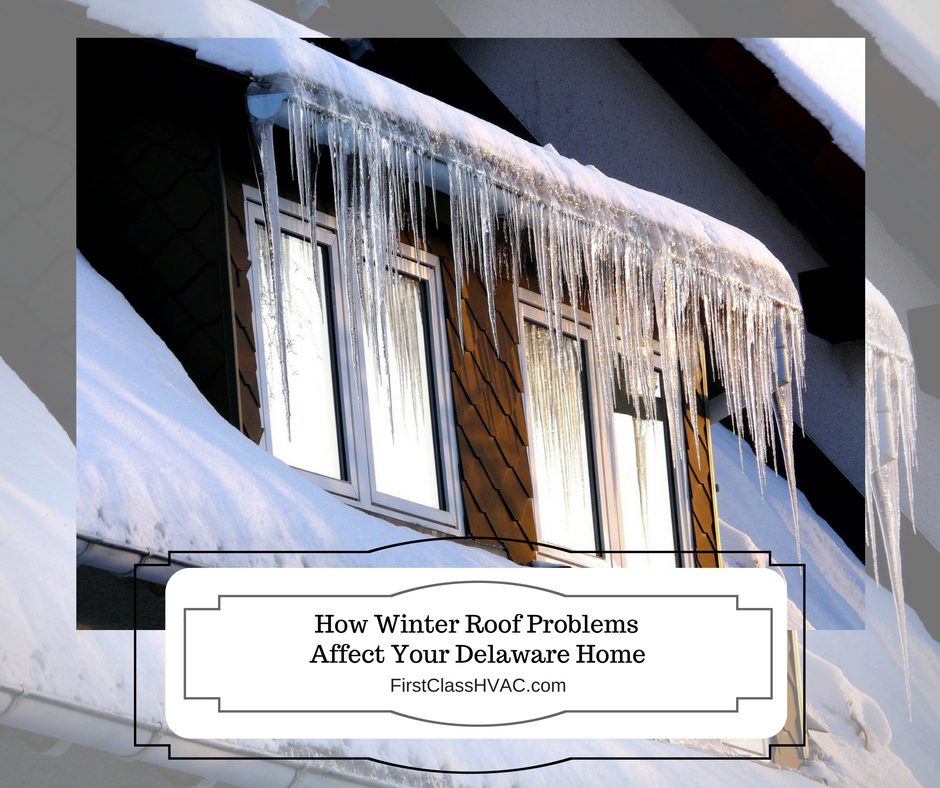
A strong and well-constructed roof usually handles the cold, ice, and heavy snow that are common in Delaware winters. However, a damaged roof may not drive away water from your home, which can cause negative issues for your residence as well as the loss of heat from your central heating system. You can often determine what kind of problem your roof is experiencing by observing the state of the roof and other locations throughout your house, giving you an idea on how to address the problem and avoid further heat loss and structural damage.
Ventilating Your Attic to Avoid Condensation Issues
One of the first indications you may have that your roof has problems in the winter is that you find excessive condensation in your residence, particularly in your attic. Condensation from a leaky roof can leave puddles on the floor and water streaks on the walls. Because a damaged roof often causes moisture to travel down the walls and through the insulation of your Delaware home, the signs of a leaky roof are often also visible in your residence’s basement. Be sure to ventilate your attic well in the winter to avoid these water problems, and consider placing a dehumidifier in the space to remove some of the moisture from the air. If you repair your faulty roof and the condensation issue persists, contact an HVAC technician to examine your attic for heating leaks and determine if the damaged roof has affected other elements of your home and resulted in a more complex situation.
Dealing with Icicle Formations and Ice Dams on Your Roof
If you notice that icicles or ice dams form on only part of your roof or that snow and ice melts at a different rate on certain spots there, it could indicate that you have a leaking roof. A damaged roof can cause moisture to dampen your home’s insulation, and this can cause your roof to get ice dams or promote the growth of icicles. A leak in your residence’s central heating is also a common culprit of the formation of ice spots and icicles, so check to see if there are any gaps in your roof that allow your indoor heat to escape. Lost heat makes your home feel colder and drafty, and it’s hard to conserve energy when your furnace’s heat escapes through your attic and leaks out your roof. Check the condition of your roof, and always keep your downspouts and gutters free of leaves and debris that can prevent melting snow from draining freely from your residence. Also, check your heating ducts to make sure that they aren’t leaking, which can compound the problem.
Handling Heavy Snow Loads and Ice
Poor drainage and heavy amounts of ice and snow can cause your roof to negatively affect the overall structure of your house. When water, snow, and ice become trapped on your roof and have no way of freely draining away, your home’s roof can leak or sag, exposing gaps in the roof that make your central heating escape. Cracks may form in the walls, which also prevents your indoor heating from staying inside your residence. Check for condensation and water damage that can alert you to a weight problem on your roof and immediately remove the heavy snow and ice, contacting a roofing professional for the job, if necessary.
Many people think that a drafty home in winter is the result of leaks and gaps in their windows and doors, but a damaged roof can also be the problem. Heavy snowfall, clogged gutters, and ice formations can cause heat to escape your residence and damage your home’s walls and insulation. By observing how your roof is handling the winter elements, you can get a better idea of what type of damage is present and take steps to repair your roof, thereby conserving energy and protecting your home’s structure from further damage.
Stay warmer this winter by choosing an energy-efficient central heating system that stands up to the frigid outdoor elements. The dedicated HVAC technicians of First Class HVAC have been assisting residents in Delaware and Maryland for more than 40 years by providing professional installation of furnaces that thoroughly heat your home, making residents feel cozy in winter. Contact us today to find out about central heating systems that have the added convenience of working in conjunction with the most convenient and modern digital thermostats on the market.

